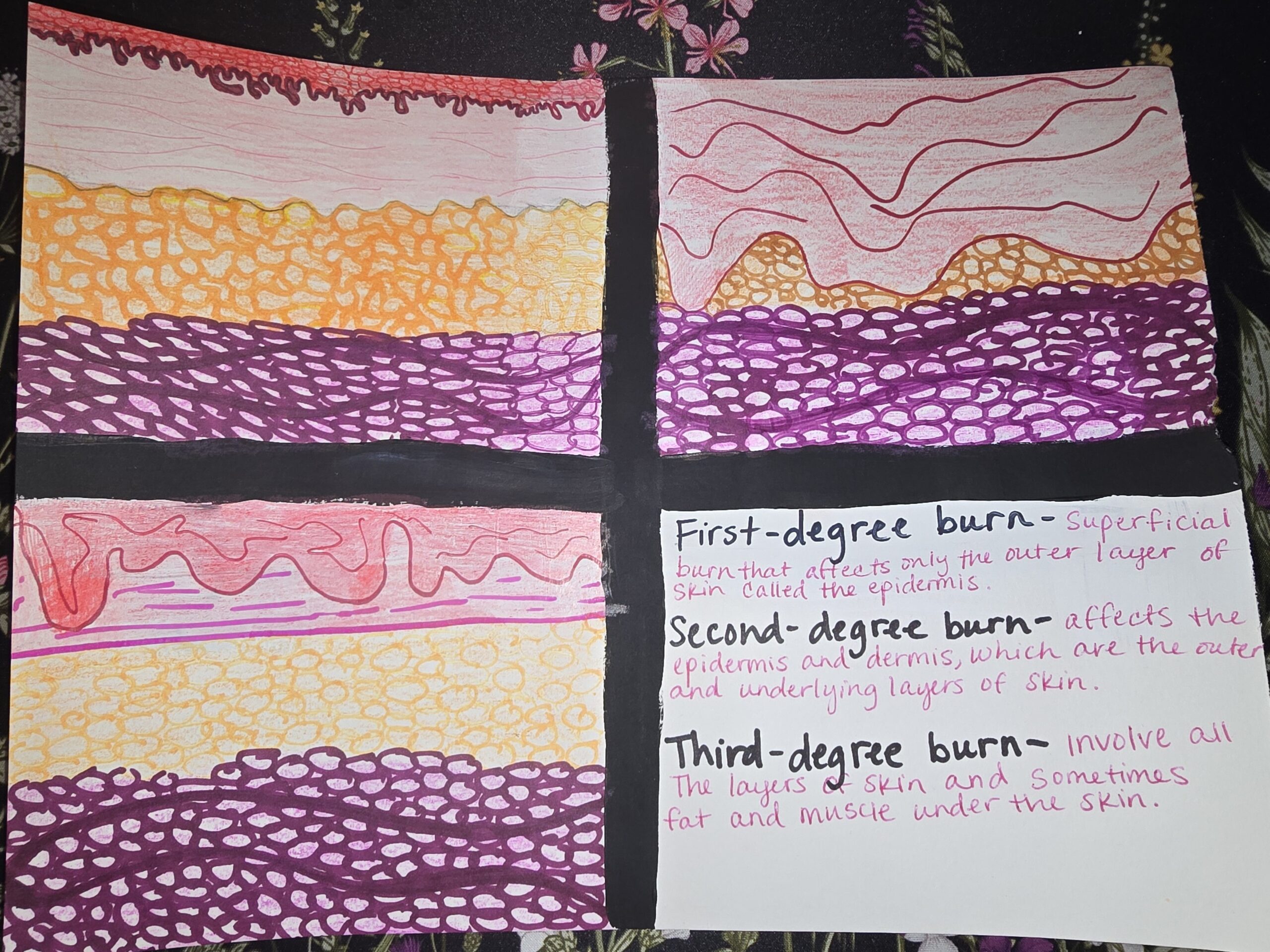Burns is tissue damage caused my high heat, electricity, radiation or friction. Burns can be superficial but can also be fatal. They are easily infected, so it is Important to keep these wounds clean and healthy.
The skin has three layers. The first layer is called the epidermis. This is the top layer that you can see and feel. Th epidermis consist of its own layers. This includes stratum corneum also known as the Horney layer. This layer is made up of cells containing protein keratin. The second layer of the epidermis is squamous cells layer. It is made up of living cells that mature and move toward the surface to become the stratum corneum layer. Finally for the epidermis we have the Basal layer, that is where the new skin cells divide to replace the old cells that we shed on the surface. The epidermis is where we hold melanin that are cells that give us our skin color. The dermis layer is the middle layer that holds all the blood vessels, lymph vessels, hair follicles, sweat glands, fibroblasts and nerves. The dermis is held together by the protein collagen. This layer also holds our nerve endings and touch signals. Finally, we have the subcutis layer. This layer is the deepest layer of skin. It consists of collagen and fat cells/ This helps saves out bodies heat and acts as a shock absorber.
There are three classifications of burns. We have first-, second- and third-degree burns. First degree burns effect only the epidermis layer and are considered superficial. An example of first-degree burns can be sunburns. Second degree burns happen on the epidermis and part of the dermis layer. This burn can cause scaring, swelling and painful. Third degree burns effect all three layers of skin and bones, tendons, and muscles. The degree of layers damaged by burns is determined by the level of damage. The categorization of burns helps us recognize the complications and will help us choose the right course of action. (Madhur Nagrath (2023) Enhanced skin burn assessment through transfer learning.)
Proper burn care for healing is important. Medical professionals often give antibiotic ointments or creams for second degree burns. This allows the wound to stay moist and prevent infections. For more severe burns providers will use skin grafts on the face, neck, hands and feet to reduce tightness and improves appearances. Types of skin grafts are sheet grafts and meshed grafts. Sheet grafts are usually for the face, neck and feet for appearances and meshed grafts are used for less functional and cometic areas and larger wounds.
There have been studies on healing second degree burn wounds. The study used fluorescent light energy. The healing was reported that 18 patients treated with FLE were reported that it was successful without infection or other adverse effect said ( Mellergaard, PHD (2021) Evaluation of Fluorescent light energy for the treatment of acute second-degree burns. This article suggests that the use of FLE works differently for each degree of burns.) The process of healing burns has 3 separate phases of healing. In the same article, it describes the phases as such: Phase 1: Hemostasis and inflammation. When the burn happens, your body will activate inflammation, cause swelling and skin discoloration. Phase 2: closure of the wounds with proliferation and pre-epithelialization. Finally phase three: maturation. In the third stage of healing is when your skin will close any gaps and will fill it with collagen and even scar.
Recourses

